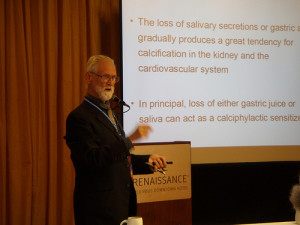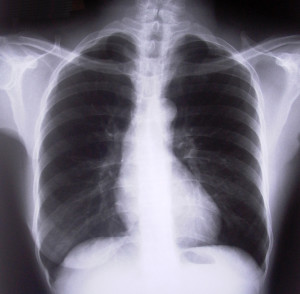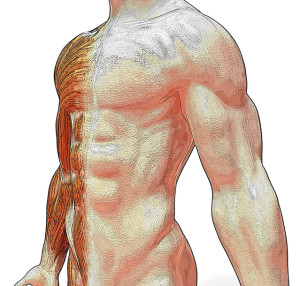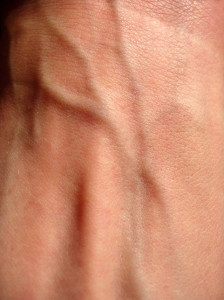L. Terry Chappell and Jeanne A. Drisko, Reprinted from the Townsend Letter with permission
Introduction
The Trial To Assess Chelation Therapy (TACT) is the only large, randomized clinical trial to provide statistically significant evidence that EDTA chelation therapy with high-dose multivitamins can reduce future cardiac events in patients with known cardiovascular disease(1,2). TACT utilized the published protocol(3) that is used by organizations such as the American College for Advancement in Medicine (ACAM), the International College of Integrative Medicine (ICIM), the American Board of Clinical Metal Toxicology (ABCT), and the International Board of Clinical Metal Toxicology (IBCMT), all of which teach physicians how to administer the therapy and/or test them to provide certification.
TACT used an intravenous dose of 3 Gm of disodium EDTA with magnesium, adjusted downward if kidney function was compromised, 7 Gm of vitamin C, 500 cc of sterile water, and several minor additives, all infused over a minimum of 3 hours(1,2). See Table 1. The published protocol is more flexible, allowing for 1.5 Gm-3 Gm of disodium magnesium EDTA over no more than 1 Gm per hour and varying amounts of vitamin C, as long as the osmolality of the treatment solution is not hypotonic and not so hypertonic as to cause problems. Calcium EDTA has also been used in various forms with claims of effectiveness for vascular disease. The use of Calcium EDTA, especially in the oral form, to treat cardiovascular disease has been criticized by the teaching organizations mentioned above. Concerns have also been raised about high doses of vitamin C, which becomes a pro-oxidant instead of an anti-oxidant at certain levels(4).
The purpose of this article is to discuss the rationale, evidence, and experience of physicians who are acknowledged experts in the use of EDTA for treating cardiovascular disease. We hope to clarify whether Calcium EDTA should be used to treat vascular disease and how much EDTA and vitamin C are effective and safe to use.
The Published Protocol
TACT used the 3 Gm basic dose of disodium EDTA with magnesium to treat patients who had a history of documented myocardial infarction. The basic protocol for TACT is shown in Table 1. {Insert Table 1} The 3 Gm dose for disodium EDTA has been taught for years, and many doctors who provide intravenous chelation therapy use it routinely. However, there is evidence that a lesser dose might be just as effective(6,7,8,9). As a result, a substantial number of treating physicians use the lesser dose, based on these reports. Obviously, a lesser treatment time is more convenient for patients. Neither dose puts the kidneys at risk as long as the required rate of administration is followed. For patients with congestive heart failure, a lesser fluid volume for the treatment might be advantageous.
Chappell and Stahl performed a meta-analysis of studies showing objective improvement for patients with cardiovascular disease treated with intravenous EDTA chelation therapy(5). Nineteen published studies involving 22,765 patients met the inclusion criteria. All of these studies used the 3 Gm dose of EDTA with one exception. Olszewer and Carter treated 2,482 patients with the 1.5 Gm dose, and 2,379 improved(6). In the meta-analysis, 87% of patients improved, and there was a correlation coefficient of 0.88 between improvement in vascular function and treatment with EDTA. Patients of the physician who used the 1.5 Gm dose did as well as those from the other sites combined.
Chappell and associates did a follow-up meta-analysis of 32 unpublished reports on 1241 patients(7). 1086 or 88% showed measurable improvement. 778 patients were treated with the 1.5 Gm bottle. A comparison of the 1.5 Gm and 3 Gm doses in this study showed almost identical results.
Born and Geurkink published a retrospective, randomized study comparing patients with peripheral artery disease treated with the 3 Gm dose of EDTA to those treated with the 1.5 Gm dose(8). 20 treatments were given to 15 patients in each group. Those treated with the lower dose improved using Doppler ultrasound by an average of 123%. The patients in the 3 Gm group improved by an average of 70%. The results were statistically significant. One patient treated with 1.5 Gm improved 715%. That patient was omitted from the study as an outlier.
Chappell and associates compared 220 vascular patients treated with a basic course and maintenance chelation to matched controls from the literature(9). An average of 58 treatments were given. Subsequent cardiac events were much less in the EDTA-treated group. The patients treated with the 1.5 Gm dose had virtually the same results as those with the 3 Gm dose.
An in vitro study published in Surgery in 1962 showed the mobilization of calcium from atherosclerotic plaque with EDTA in the laboratory(10). The results demonstrated that the longer the tissue is exposed to EDTA, the more calcium was removed. To our knowledge, this finding has not been confirmed in vivo.
Blaurock-Busch observes that the German Chelation Society approves both a 2 Gm and 3 Gm dose(11). Gordon wrote the first American Academy of Medical Preventics (AAMP) chelation protocol in 1972, based on the work of such pioneers as Clark and Lamar. It was not published, but it was used in coursework for many years. He listed the EDTA dose of 50 mg/ Kg. Cranton’s 1989 Textbook refers to a maximum of 3 Gm dose, except for large patients who could receive up to 5 Gm at 50 mg/Kg. The textbook was updated in 2001(12). Rozema’s protocol for EDTA(3) lists both a 3 Gm and 1.5 Gm dose, as does van der Schaar’s 2012 Textbook(13). The latter has a maximum of 4 Gm for large patients. All of these protocols insist on an infusion rate of disodium EDTA not faster than 1 Gm per hour to avoid overloading the kidneys.
Because of TACT, the best evidence for treatment of vascular disease with intravenous disodium EDTA lies with the 3 Gm dose. However, the published studies cited above that compare the 3 Gm dose to the 1.5 Gm dose show the latter to be as effective. As noted, one study showed the 1.5 Gm dose to be more effective for peripheral vascular disease. Future large clinical trials will be necessary to determine the lowest amount of EDTA that can produce the best outcome in cardiovascular disease.
Mechanisms of action for EDTA
Proposed mechanisms of action for EDTA chelation therapy have been documented(14), but no consensus exists as to which mechanism(s) are most important to treat vascular disease. It is well known that both disodium EDTA and calcium EDTA can remove heavy metals. Such metals as lead, cadmium, and mercury increase the risk of vascular diseases by increasing free radical activity(15). Reduction of free radicals by EDTA infusions reduces inflammation, which might lesson the likelihood of the rupture of unstable plaques(16). The clot that occurs as a result of this rupture is the accepted mechanism for most myocardial infarctions and strokes. A small study by Chappell and Angus showed a reduction of brachial artery stiffness with chelation(17). Iron deposits have been found in macrophage foam cells, which further increase free radicals and inflammation. Excessive copper also increases free-radical activity. EDTA chelates both iron and copper(18).
Lowering blood calcium levels with intravenous boluses of disodium EDTA can inhibit platelet aggregation for weeks at a time(19). Intravenous EDTA has been proposed as a safer substitute for clopidogrel to prevent clotting after inserting drug-eluting stents(20). The anti-clotting effect is likely to be an important mechanism for chelation’s cardiovascular benefits. Selye demonstrated harmful deposition of calcium in soft tissue when a sensitized individual is exposed to a new challenge after a suitable interval(21). The drop in serum calcium that occurs almost immediately upon IV infusion of disodium EDTA stimulates parathyroid activity. Parathormone mobilizes calcium from soft tissue deposits, but the effect is irregular. Although there are case reports that plaque can be reduced with disodium chelation(22,23), studies have not shown a predictable improvement in lumen size for arteries blocked with plaque. It is possible that the calcium reduction cascade stabilizes vulnerable plaques, but this also has not been proven.
High doses of magnesium are put into the intravenous treatment solution, which prevents adverse effects from the brief drop in calcium levels. Improved levels of intracellular magnesium might reduce irritable foci that cause arrhythmias and lower blood pressure. To prevent progressive calcium depletion, it is important that IV infusions of disodium EDTA be given no more often than 2-3 days per week, with at least 24 hours between treatments. With 60 years of use of intravenous disodium EDTA for vascular disease, no fatalities have been attributed to EDTA when the protocol has been followed. However, there have been isolated fatalities when disodium EDTA was administered by rapid IV push.
Nitric oxide(NO) is an important signaling molecule that is anti-atherosclerotic. NO production declines with age and is worse with a high fat diet. Lead inhibits NO formation. EDTA not only removes lead but also independently increases NO production(24). This might be an important mechanism for improved circulation for both disodium EDTA and calcium EDTA.
Vitamin K2 also might help remove metastatic calcium from arterial walls. It has been suggested as an oral supplement to augment the decalcifying effect of disodium EDTA(25). However, vitamin K2 is not currently included in the chelation therapy protocol
Calcium EDTA
Intravenous calcium EDTA is approved for removing lead and is used to treat accumulations of other toxic metals. Since there is no reduction of serum calcium as is seen with disodium EDTA, certain mechanisms that are proposed for treating vascular problems do not apply. Specifically, metastatic calcium is not mobilized and platelets are not inhibited.
Oral, sublingual, transdermal, and rectal EDTA all consist of calcium EDTA. Oral EDTA is only about 5% absorbed. Rectal EDTA might be absorbed as much as 35-37% (26).
Intravenous calcium EDTA is used widely as a challenge test and a treatment for toxic metals. It was used in a small study by Lin that showed that non-diabetic patients with moderate kidney disease might progress less rapidly with EDTA treatment than without(27). Chen and associates showed that diabetic nephropathy in the presence of high lead levels progressed at a slower rate than controls when their lead levels were reduced and kept under control with 1 Gm calcium EDTA treatments IV(28). High levels of lead have been shown to be associated with lower blood pressure and an increased risk of vascular disease(29). Reducing the lead burden might result in improved blood pressure and better circulation to the kidneys. However, without a drop in serum calcium, decalcification of the arterial wall is highly unlikely. The many published studies showing improvement in vascular disease, including TACT, all have used disodium EDTA with magnesium.
Garry Gordon has proposed that calcium EDTA combined with lecithin and other nutrients improves blood viscosity, and he cites the work of Lowe (30) and others. One might expect this to be the case since lavender-top tubes with EDTA are used to anti-coagulate blood drawn from patients for testing. However, the EDTA used for that purpose is potassium EDTA (K2EDTA), not calcium EDTA. We were unable to find evidence that calcium EDTA reduces platelet activity directly. One mechanism for inhibition of platelet aggregation is a depletion of calcium ions. However, another probable mechanism that applies to calcium EDTA is its stimulation of the production of NO. Several oral nutrients that can lesson platelet aggregation, such as vitamin E and gingko, can be given orally along with calcium EDTA.
Cranton points out a potential danger of oral chelation on his website(31). Some toxic metals that are ingested might not be absorbed into the body if calcium EDTA is present, but many more essential minerals will also not be absorbed. Depletion of zinc, chromium, copper, manganese, and other minerals can reduce antioxidant defenses and endocrine function. Cranton stresses the importance of the rapid decrease in both toxic metals and calcium with disodium EDTA. This occurs extracellularly since EDTA does not enter the cells. A re-equilibration results so that calcium is mobilized as described above and toxic metals are brought out of storage in the bone, brain, and fat cells.
Calcium EDTA is widely sold and advertised as an ingredient in various nutritional supplements. Claims of effectiveness for calcium EDTA in treating vascular disease are often made based on research that was done for intravenous disodium EDTA. Calcium EDTA and disodium EDTA are two separate compounds that act on calcium differently in the body. Although useful mechanisms of action might apply for calcium EDTA, we did not find any clinical trials that support the use of calcium EDTA for treating vascular problems.
Van der Schaar’s textbook describes many toxic metals and chelating agents(13). DMSA, DMPS, and the two forms of EDTA are commonly used in clinical practice at this time. DMSA is available orally and is used to chelate lead and mercury in adults and children. DMPS is a compounded substance for oral or IV use, mostly for lead and mercury, but it is not an FDA-approved medication. DFO is sometimes used for iron overload parentally but serial phlebotomies are generally more effective. D-penicillamine can be helpful as a challenge test and occasional treatment. These medications can be used in combination if the prescribing physician is experienced. The two forms of EDTA are broader chelators and are especially effective for lead. EDTA has perhaps the weakest affinity for mercury. If mercury is elevated with a challenge test, it might be prudent to treat with DMSA or DMPS before prescribing intravenous EDTA. Maintaining good levels of beneficial minerals is important no matter what chelation agent(s) is/are prescribed. Treatment with DMSA or DMPS reduces free radical activity by binding and excreting heavy metals, which might be beneficial. However, we did not find any clinical trials that have studied either one as a treatment or preventative for vascular disease.
Vitamin C
As with any medical practice, whether conventional or alternative, different approaches and individualized styles of practice evolve. Some of the differences in approaches relate to experience and some are based on growing evidence from the scientific literature. And so it is with EDTA chelation therapy with certain groups giving differing amounts of EDTA over varying times and by different routes of administration, while others advocate using different formulations and combinations of additives in the mix. One proposed change has been the recent suggestion that vitamin C or ascorbic acid be removed from EDTA chelation therapy(4,32) because of its known action as a pro-oxidant in the extracellular space in living systems(33,34).
Seminal findings regarding the unexpected pro-oxidant action of intravenous vitamin C were discovered in the National Institutes of Health (NIH) lab of Mark Levine, MD along with his colleagues, Qi Chen, PhD and others(33,34). Levine and colleagues clearly defined that oral vitamin C was a vitamin with tight physiologic control and anti-oxidant properties, while intravenous vitamin C administration bypassed tight control and through Fenton chemistry became pro-oxidative in the extracellular space(35-37). In people with normal G6PD status, the pro-oxidative nature of vitamin C does not occur in the vascular space(34).
It is interesting that another well-known anti-oxidant, glutathione, does not behave like vitamin C when injected in high doses(38). Glutathione maintains its anti-oxidant properties even when injected at increasing concentrations and has led to the recommendation against adding IV vitamin C and IV glutathione together at the same setting(38). To date, other anti-oxidants such as alpha lipoic acid have not been evaluated in this manner to determine if they might exhibit a dual nature like vitamin C.
The pro-oxidative nature of intravenous vitamin C has led some to postulate that adding vitamin C to EDTA chelation therapy might have a deleterious effect on patients with already high oxidative burden, as seen in diabetes(4,32). The hypothesis is that patients with oxidative disease processes may not be able to tolerate the additional oxidative burst that briefly occurs after intravenous vitamin C. Roussel and colleagues conducted a small uncontrolled trial in 6 adults where EDTA chelation therapy was administered according to standard protocol except for elimination of the vitamin C from the infusate(4). In the reported trial, markers for oxidative damage were evaluated in the absence of added vitamin C and were found not to be present. The group concluded that EDTA chelation therapy without added vitamin C decreases oxidative stress. But as Roussel and colleagues clearly stated, the small trial was not designed to test the curative effects of the chelation therapy. They acknowledged they were focusing solely on anti-oxidative effects.
The Roussel trial is in contrast to the TACT trial where 1,708 participants with known cardiovascular disease were enrolled(2). The sample size was chosen so that the effect of EDTA chelation therapy on cardiovascular outcomes could be evaluated. The standard accepted protocol was chosen and this included 7 grams of vitamin C injected at each infusion(1). An unexpected and remarkable finding at the conclusion of the TACT trial was the marked reduction in cardiovascular events in diabetic participants (2). This has prompted the NIH to ask researchers to focus on the positive effects in the standard EDTA infusate that may have promoted such beneficial outcomes(39). However, the belief that intravenous vitamin C is a harmful pro-oxidant has led other experienced practitioners of chelation therapy to abandon the addition of vitamin C to the mix(32). The trial findings with the small sample size and the concerns raised by Roussel and colleagues are contradicted by the positive outcomes of TACT.
What then is the effect that vitamin C plays in the chelation infusate? Is it related to the pro-oxidative burst? Is it related to other as of yet undescribed effects, apart from Fenton chemistry? It is advisable to remember that in the vascular space, when there is normal G6PD status, there are no significant detectable levels of hydrogen peroxide and no detectable pro-oxidant effect(33,34,40). Any hydrogen peroxide that might be formed after infusion of vitamin C is quickly and effectively quenched in the vascular space, unlike what occurs in the extracellular space. Is it possible that vitamin C at increased concentrations has an effect on the endothelium? Or on the function of blood elements like the red blood cells that are so critical for oxygen mobilization? Unpublished research carried out by the Levine team points to this possibility.
The epidemiology literature shows that vitamin C is critical for improvement of HbA1c and avoiding untoward effects in diabetics(41). However, it can easily be argued that this is a vitamin effect not a pharmacologic effect. In the tobacco literature it has been shown that the prolonged and destructive exposure to tobacco smoke markedly reduces available vitamin C levels in vivo that are only replenished effectively with intravenous infusion(42-46). Functional effects on the microvascular bed can be reversed with IV vitamin C(43,45). It can be argued that tobacco smoking is a model for highly oxidative chronic diseases such as diabetes. Benefits of infused vitamin C could have positive effects on microvasculature function. This would certainly be a good model for future research.
Other nonvascular effects of IV vitamin C also come into play such as the effects of ascorbate in steroidogenesis, vascular tone, adrenal gland function during stress, and general well-being(47-50). Taking the narrow view that vitamin C acts only a pro-oxidant or an anti-oxidant may result in the risk of excluding vitamin C with its various positive functions, both known and as yet unknown, in the beneficial treatment of cardiovascular disease with EDTA chelation therapy.
Conclusions
Scientific evidence, especially with TACT, supports intravenous disodium EDTA with magnesium, along with oral multivitamins, to treat vascular disease. Disodium EDTA can only be given by slow intravenous drip, at a rate no faster than 1 Gm per hour. Under no circumstances can this preparation be given by intravenous push because of its effect to rapidly lower serum calcium. Evidence supports treatment doses of 1.5 or 3.0 Gms of disodium EDTA. The dose should be reduced if kidney function is impaired. Kidney function should be monitored during the course of treatment. Treatments should be limited to no more than 2 or 3 days per week with at least 24 hours between treatments. 20-30 treatments are needed to complete a basic course of treatment for vascular disease(3). More treatments may be required in difficult cases. Most experts recommend monthly maintenance after the basic course is completed. If the published protocol is followed, safety is not an issue(2). Disodium EDTA with magnesium effectively removes heavy metals from the body. Other likely mechanisms of action include reduced platelet aggregation, mobilization of metastatic calcium by parathormone, increased NO production, and antioxidant activity.
Calcium EDTA can be given intravenously or by other routes of administration to remove toxic metals. Oral absorption is only 5% and rectal absorption might be as high as 35-37%. Calcium EDTA does not have all the mechanisms of action that disodium EDTA does to reduce or prevent vascular disease. However, calcium EDTA with multivitamins increases NO production and decreases free radical activity. Moderately impaired kidney function might improve with IV Calcium EDTA. Clinical trials have not been done to support calcium EDTA as a treatment for vascular disease at this time. Calcium EDTA should not be given on a continuing basis without being careful to avoid depletion of essential mineral nutrients. Optimal mineral balance might be difficult to accomplish with oral preparations given on a daily basis.
At this juncture because of the positive TACT outcomes, vitamin C should not be excluded from or reduced in the infusate. The hypothesis that IV vitamin C results in a significant deleterious oxidative burst has not been born out and as part of the total chelation component seems to provide an additional benefit in patients with diabetes and cardiovascular disease. As shown in other conditions with high oxidative environments, IV vitamin C can provide protection and vascular stability. Exciting research opportunities in parsing out the effect of the various chelation components in treating cardiovascular disease lie ahead.
*See responses from physicians below References section
References
- Lamas G, Goertz C, Boineau R, Mark DB, Rozema T, Nahin RL, Drisko J, Lee KL. Design of the Trial to Assess Chelation Therapy (TACT). Am Heart J [Internet]. Mosby, Inc.; 2012 Jan [cited 2013 Aug 12];163:7–12.
- Lamas GA, Goertz C, Boineau R, Mark DB, Rozema T, Nahin RL, Lindblad L, Lewis EF, Drisko J, Lee KL. Effect of disodium EDTA chelation regimen on cardiovascular events in patients with previous myocardial infarction: the TACT randomized trial. JAMA 2013;309:1241-1250.
- Rozema TC. Special issue: protocols for chelation therapy. J Adv Med 1997;10;5-100.
- Roussel AM, Hininger-Favier I, Waters RS, Osman M, Fernholz K, Anderson R. EDTA chelation therapy, without added vitamin C, decreases oxidative DNA damage and lipid peroxidation. Altern Med Rev [Internet]. 2009 Mar;14(1):56–61.
- Chappell LT, Stahl JP. The correlation between EDTA chelation therapy and improvement in cardiovascular function: a meta-analysis. J Adv Med 1993;6:139-63.
- Olszewer E, Carter JP. EDTA chelation therapy in chronic degenerative disease. Med Hypoth 1988;27:41-49.
- Chappell LT, Stahl JP, and Evens R. EDTA chelation treatment for vascular disease: a meta-analysis using unpublished data. J Adv Med 1994;7:131-142.
- Born GR, Geurkink TL. Improved peripheral vascular function with low dose intravenous ethylene diamine tetraacetic acid (EDTA). Townsend Letter 1994;July:722-726.
- Chappell LT, Shukla R, Yang J, Blaha R, et al. Subsequent cardiac and stroke events in patients with known vascular disease treated with EDTA chelation therapy: a retrospective study. Evid Based Integrative Med 2005;2:27-35.
- Wilder LW, et.al. Mobilization of atherosclerotic plaque calcium with EDTA utilizing the isolation-perfusion. Surgery;52.
- Blaurock-Busch E. Toxic metals and antidotes: the chelation therapy handbook. Germany, MTM Publishing, 2010.
- Cranton EM, ed. A textbook on EDTA chelation therapy, second edition. Charlottesville, Va, Hampton Roads, 1989, updated 2001.
- Van der Schaar PJ, et.al. Clinical metal toxicology, 10th edition. International Board of Clinical Metal Toxicology. Leende, The Netherlands 2010.
- Olmstead SF. A critical review of EDTA chelation therapy in the treatment of occlusive vascular disease. Klamath Falls, Oregon, Merle West Medical Center Foundation, 1998.
- Halstead BW and Rozema TC. The scientific basis of EDTA chelation therapy, second edition, Landrum, SC, TRC Publishing, 1997.
- Heistad DD. Unstable coronary plaques. N Engl J Med 2003;349:2285-2288.
- Chappell LT, Angus RC and associates. Brachial artery stiffness testing as an outcome measurement for EDTA-treated patients with vascular disease. Clinical Prac Alt Med 2000;1:225-229.
- Cranton EM, Frackelton JP. Free radical pathology in age-associated diseases: treatment with EDTA chelation, nutrition, and anti-oxidants. J Hol Med 1984;6;6-37.
- Zucker MB, Grant RA. Nonreversible loss of platelet aggregability induced by calcium deprivation. Blood. 1978;52:505-13.
- Chappell LT. Should EDTA chelation therapy be used instead of long-term clopidogrel plus aspirin to treat patients at risk from drug-eluting stents? Altern Med Rev. 2007;12:152-158.
- Selye, H. Calciphylaxsis. University of Chicago Press, Chicago 1962.
- Rudolph CJ, McDonagh EW. Effect of EDTA chelation and supportive multivitamin/mineral supplementation on carotid circulation: case report. J Adv Med 1990;3:5-12.
- Rubin M. Magnesium EDTA chelation, chapter 175 in Cardiovascular Drug Therapy, editor Messerli FH. WB Saunders Co, Philadelphia 1996.
- Barbosa F, Sertorio JTC, Garlach RF, Tanus-Santos JE. Clinical evidence for lead-induced inhibition of nitric oxide formation. Arch Toxicol 2006;80:811-816.
- Rheaume-Bleue K. Vitamin K2 and the calcium paradox. John Wiley & Sons Canada, Ltd. Mississauga, Ontario 2012.
- Ellithorpe, R. Comparison of the absorption, brain, and prostate distribution, and elimination of CaNa2EDTA of rectal chelation suppositories to intravenous administration. JANA 2007;10:38-44.
- Lin JL, Lin-Tan DT, Hsu KH, et al. Environmental lead exposure and progression of renal diseases in patients without diabetes. N Engl J Med. 2003;348:277-86.
- Chen Kuan-Hsing and associates. Effect of chelation therapy on progressive diabetic nephropathy in patients with type 2 diabetes and high-normal body lead burdens. Am J Kidney Dis 2012;60:530-538.
- Nash D, Magler L, Lustberg M, et.al. Blood lead, blood pressure, and hypertension in perimenopausal and postmenopausal women. JAMA 2003;289:1523-1532.
- Lowe GD and associates. Blood viscosity and risk of cardiovascular events: the Edinburgh Artery Study. Br J Haematol 1997;96:168-173.
- Cranton EM. Http.//drcranton.com/chelation/oralchelation.htm. accessed Dec 30, 2013.
- Born T, Kontoghiorghe CN, Spyrou A, Kolnagou A, Kontoghiorghes GJ. EDTA chelation reappraisal following new clinical trials and regular use in millions of patients: review of preliminary findings and risk/benefit assessment. Toxicol Mech Methods [Internet]. 2013 Jan [cited 2013 Dec 29];23:11–7.
- Chen Q, Espey MG, Krishna MC, Mitchell JB, Corpe CP, Buettner GR, Shacter E, Levine M. Pharmacologic ascorbic acid concentrations selectively kill cancer cells: action as a pro-drug to deliver hydrogen peroxide to tissues. Proc Natl Acad Sci U S A [Internet]. 2005 Sep 20;102:13604–9.
- Chen Q, Espey MG, Sun AY, Lee J-H, Krishna MC, Shacter E, Choyke PL, Pooput C, Kirk KL, Buettner GR, Levine M. Ascorbate in pharmacologic concentrations selectively generates ascorbate radical and hydrogen peroxide in extracellular fluid in vivo. Proc Natl Acad Sci U S A [Internet]. 2007 May 22 [cited 2012 Oct 29];104:8749–54.
- Levine M, Conry-Cantilena C, Wang Y, Welch RW, Washko PW, Dhariwal KR, Park JB, Lazarev A, Graumlich JF, King J, Cantilena LR. Vitamin C pharmacokinetics in healthy volunteers: evidence for a recommended dietary allowance. Proc Natl Acad Sci U S A [Internet]. 1996 Apr 16 [cited 2013 Mar 22];93:3704–9.
- Padayatty SJ, Levine M. New insights into the physiology and pharmacology of vitamin C. CMAJ [Internet]. 2001 Feb 6;164:353–5.
- Padayatty SJ, Sun H, Wang Y, Riordan HD, Hewitt SM, Katz A, Wesley RA, Levine M. Vitamin C pharmacokinetics: implications for oral and intravenous use. Ann Intern Med [Internet]. 2004 Apr 6 [cited 2013 Mar 22];140:533–7.
- Chen P, Stone J, Sullivan G, Drisko J, Chen Q. Anti-cancer effect of pharmacologic ascorbate and its interaction with supplementary parenteral glutathione in preclinical cancer models. Free Radic Biol Med [Internet]. 2011 Aug 1 [cited 2013 Apr 12];51:681–7.
- http://nccam.nih.gov/news/2013/111913?nav=gsa, accessed 12/30/2013.
- Chen Q, Espey MG, Sun AY, Pooput C, Kirk KL, Krishna MC, Khosh DB, Drisko J, Levine M. Pharmacologic doses of ascorbate act as a prooxidant and decrease growth of aggressive tumor xenografts in mice. Proc Natl Acad Sci U S A [Internet]. 2008 Aug 12;105:11105–9.
- Kositsawat J, Freeman VL. Vitamin C and A1c relationship in the National Health and Nutrition Examination Survey (NHANES) 2003-2006. J Am Coll Nutr [Internet]. 2011 Dec;30:477–83.
- Alberg A. The influence of cigarette smoking on circulating concentrations of antioxidant micronutrients. Toxicology [Internet]. 2002 Nov 15;180:121–37.
- Ambrose J, Barua RS. The pathophysiology of cigarette smoking and cardiovascular disease: an update. J Am Coll Cardiol [Internet]. 2004 May 19 [cited 2013 Nov 13];43:1731–7.
- Northrop-Clewes C, Thurnham DI. Monitoring micronutrients in cigarette smokers. Clin Chem Acta [Internet]. 2007 Feb [cited 2013 Dec 9];377(1-2):14–38.
- Schindler TH, Nitzsche EU, Munzel T, Olschewski M, Brink I, Jeserich M, Mix M, Buser PT, Pfisterer M, Solzbach U, Just H. Coronary vasoregulation in patients with various risk factors in response to cold pressor testing. J Am Coll Cardiol [Internet]. 2003 Sep [cited 2013 Dec 9];42:814–822.
- Arnson Y, Shoenfeld Y, Amital H. Effects of tobacco smoke on immunity, inflammation and autoimmunity. J Autoimmun [Internet]. Elsevier Ltd; 2010 May [cited 2013 Dec 3];34:J258–65.
- Miller WL, Auchus RJ. The molecular biology, biochemistry, and physiology of human steroidogenesis and its disorders. Endocr Rev 2011 Feb;32:81–151
- Padayatty SJ, Doppman JL, Chang R, Wang Y, Gill J, Papanicolaou D, Levine M. Human adrenal glands secrete vitamin C in response to adrenocorticotrophic hormone. Am J Clin Nutr [Internet]. 2007 Jul [cited 2012 Dec 20];86:145–9.
- Suh S-Y, Bae WK, Ahn H-Y, Choi S-E, Jung G-C, Yeom CH. Intravenous vitamin C administration reduces fatigue in office workers: a double-blind randomized controlled trial. Nutr J [Internet]. BioMed Central Ltd; 2012 Jan [cited 2013 Sep 3];11:7.
- Bruno RM, Daghini E, Ghiadoni L, Sudano I, Rugani I, Varanini M, Passino C, Emdin M, Taddei S. Effect of acute administration of vitamin C on muscle sympathetic activity, cardiac sympathovagal balance, and baroreflex sensitivity in hypertensive patients. Am J Clin Nutr [Internet]. 2012 Aug [cited 2012 Nov 24];96:302–8.
TABLE 1: Infusate used in TACT Trial
| Component |
Amount
|
| Na2EDTA |
3 grams
|
| Magnesium Chloride |
2 grams
|
| Procaine HCl |
100 mg
|
| Heparin |
2,500 Units
|
| Ascorbate (Vitamin C) |
7 grams
|
| KCl |
2 mEq
|
| Na Bicarbonate |
840 mg
|
| Pantothenic Acid |
250 mg
|
| Thiamine |
100 mg
|
| Pyridoxine |
100 mg
|
| Sterile Water |
To 500 mL
|
The mixture of components given in the TACT Trial was based on committee consensus bewteen the TACT Trial investigators and representatives of the chelating community. The agreed upon solution was selected as the representative mixture that had been in use. The amount of EDTA administered to the trial participants was tailored to the individual renal function based on the Cockgroft-Gault equation. Reference: (1,2,3)
Comments from a few experts:
 Ralph Miranda— I suspect that the most consistently effective dose is the 3 Grams of disodium-magnesium EDTA in the 500 ml bag/bottle infused over 3 hours. I believe that the attraction of metal ions and ligands causes enough of a shift in pools of metal ions, that previously inhibited enzymatic reactions are liberated from the effects of toxic metals and permitted to contribute to normal and desirable repair processes for which they are suited. Remove the poisons from the systems, and the systems work closer to their innate abilities, to clean up the damage inherent to everyday life.
Ralph Miranda— I suspect that the most consistently effective dose is the 3 Grams of disodium-magnesium EDTA in the 500 ml bag/bottle infused over 3 hours. I believe that the attraction of metal ions and ligands causes enough of a shift in pools of metal ions, that previously inhibited enzymatic reactions are liberated from the effects of toxic metals and permitted to contribute to normal and desirable repair processes for which they are suited. Remove the poisons from the systems, and the systems work closer to their innate abilities, to clean up the damage inherent to everyday life.
Of course, some patients are too frail to withstand the higher dose or the greater fluid volumes, so the 1.5 Gm dose infused at the same rate over half the time or a bit longer suits them well. I’m convinced that the patients who get the “half dose” get far more than “half” the benefit. This dose also works well for patients who are not at liberty to spend as much time away from work, or in my office. Another reason to tread lightly would be patients on multiple pharmaceuticals or with multiple intertwined medical condition.
I will also use the calcium disodium EDTA, especially when the sole focus of treatment is removal of specific toxic metals. I am not a fan of the rapid infusion of this mixture, even though many chelating doc’s recommend the rapid push due to the absence of risk for hypercalcemia. I believe there is plenty of potential for disruption of physiologic levels of Zn, Mn, Cr, and other trace metals from too rapid an injection. Oral EDTA and rectal suppositories share the lack of significant absorption for purposes of CVD and reducing metals. These are the least effective choices and I reserve them for those who cannot, for whatever reason, use the IV therapies.
Michael Schachter— I generally follow the ACAM protocol, using Cockgroft-Gault to calculate the proper dosage with a maximum of 3 grams of EDTA. My infusions are generally 3 hours. We have used catheters exclusively for many years to avoid butterflies’ tendency to come out of the vein when the patient moves around. If my primary goal is removing lead or cadmium, I use calcium EDTA instead of disodium EDTA and usually run the infusion over 20 to 30 minutes.
Claus Hancke— Since 1987 I have been using the same protocol with great success and not one single fatality or serious side effect in nearly 100.000 infusions. Nothing is added that can be given as effectively orally. My carrier solution is 250cc of isotonic glucose. This does not create problems with diabetic patients and avoids a saline load for those with heart failure. Magnesium and bicarbonate avoid infusional pain and tremor. I use 3 Gm of EDTA and have recently reduced from 5 Gm to 2 Gm of vitamin C. My infusions last 3 hours.
We EDTA-doctors of the world have been using the EDTA chelation protocol mainly unchanged from 1987. Now after 25 years we have succeeded against our opponents and can show the TACT study with significant results. So I don’t think it is politically wise to change the protocol right now. Let’s make serious trials to see the efficacy of different infusion modalities, but never give up what we have established.
 Ted Rozema–Hans Seyle comments in his book, Calciphylaxis, about how PTH is a direct producer of calcium deposition in arterial walls. My personal take on the deposition of calcium in arterial walls leading to atherosclerosis is that as we age, the fundus of the stomach does not produce the gastric acid needed to imbed a marker on the calcium molecule so it can be seen by the gut villi cells and be invited into the blood stream. This will cause not enough calcium to be absorbed to maintain the tightly controlled calcium balance in the blood stream. Over time, there is a miniscule parathyroid hormone release to take calcium from the bone to make up the shortfall. This produces the sensitization to put some of the calcium into arterial walls. Over many years, the clinical picture of early death and other vascular conditions result.
Ted Rozema–Hans Seyle comments in his book, Calciphylaxis, about how PTH is a direct producer of calcium deposition in arterial walls. My personal take on the deposition of calcium in arterial walls leading to atherosclerosis is that as we age, the fundus of the stomach does not produce the gastric acid needed to imbed a marker on the calcium molecule so it can be seen by the gut villi cells and be invited into the blood stream. This will cause not enough calcium to be absorbed to maintain the tightly controlled calcium balance in the blood stream. Over time, there is a miniscule parathyroid hormone release to take calcium from the bone to make up the shortfall. This produces the sensitization to put some of the calcium into arterial walls. Over many years, the clinical picture of early death and other vascular conditions result.
The issue of using calcium EDTA (instead of magnesium disodium EDTA to reduce metastatic calcium and treat vascular disease) is imbedded in the use of magnesium disodium EDTA. Once the latter molecule hits the blood stream, the magnesium is dropped for chelation of calcium. The resulting decrease in free serum calcium is what triggers the parathyroid action (and the platelet effect). The resulting calcium disodium EDTA will then do all the toxic metal binding that calcium disodium EDTA does when given as a short IV infusion….

Joe Hickey—I believe that mercury is chelated with EDTA. The resulting mercury EDTA rapidly vaporizes from urine and thus is difficult to measure. If one believes that neither CaNa2EDTA or MgNa2EDTA effectively chelates mercury, then one must account for mercury with DMSA or DMPS. If urine and fecal measurements are done, the largest amount of heavy metals removed is by far mercury with lead a distant second place. If only urine is collected, lead is usually the highest excretion with mercury second, in my patients. Therefore, I also use DMSA if tolerable with either form of EDTA to account for mercury. I will give 10 mg/kg of DMSA for three days, starting on the day of the IV with EDTA. DMSA is less likely to vaporize in the stool.
When treating primarily for vascular disease, I use MgNa2 EDTA 1.5 Gms over 1.5 hours with the addition of the DMSA. I have found this regimen to be successful in patients who have had recurrent angina, post bypass, and stent closure. I am rarely able to talk patients into consistently sitting for the 3 Gm/3 hour infusion. I believe there is probably an additional effect for the 3 hour infusion in cases of calcific valvular disease and scleroderma, because of the parathyroid effect but I am not convinced that the 3 Gm dose is the sole treatment for vascular disease. In younger patients with fibromyalgia or neuropathy, I will usually use CaNa2EDTA in combination with DMSA. If DSMA is not tolerated, I will alternate with DMPS.
John Trowbridge— What are we trying to accomplish with chelation treatmen ts? If a patient is substantially ‘loaded’ with toxic metals, treatment goals will be different than those for one with high-grade blockage disease in critical arteries. Patients suffering with crippling inflammatory and/or auto-immune diseases might require a another approach.
ts? If a patient is substantially ‘loaded’ with toxic metals, treatment goals will be different than those for one with high-grade blockage disease in critical arteries. Patients suffering with crippling inflammatory and/or auto-immune diseases might require a another approach.
Injectable and oral medication alternatives to EDTA should be considered, depending on a variety of factors. However, 60 years of beneficial and safe reports regarding EDTA would argue for that to be the basic IV chelator. Others could be added in ways that maximize their safety considerations as well, such as oral DMPS, DMSA, and d-penicillamine, as well as IM DFO.
With different stability constants and side effects, using two or more chelating agents at the same time, poses potential risks to the patient. The simplest way to avoid such unpredictable interactions is to administer one chelating drug at a time. In 1993 I developed the idea of administering different chelating drugs on an intermittent, pulsatile schedule. This protocol avoids the potential of interaction of two or more chelation drugs but still allows for exploiting the ‘preferences’ of each drug for different toxic metals. Extra physiologic minerals would, of course, be needed to handle the additional chelator load.
To minimize side effects, I have patents take one 250 mg tablet each evening during the week. For example, a patient might be advised to take d-Pen 250 mg each bedtime on days 1-7 of the month, then DMSA 250 mg each bedtime on days 8-14, then d-Pen again on days 15-21 and DMSA again on days 22-28, with a ‘break’ until day 1 of the next month. I do not mix IV EDTA with DFO, nor do I give d-penicillamine or DMSA within 4-6 hours of EDTA IV.
With the changing urinary elements test reports, a patient might be told to take just d-Pen or DMSA every day of the month. Now that oral DMPS is readily available, it might be inserted into the ‘weekly’ protocol as well, especially when mercury levels are substantially elevated on the test report.
By 1997, I had confirmed that our reduction of toxic heavy metal body burden – as measured by the d-Pen challenge urinary elements test – was proceeding at a rate at least one-third faster than with IV EDTA alone.
Two serious mistakes that beginning doctors often make when giving chelation therapy are insufficient attention to mineral depletion and too rapid reduction of cardiovascular medications. Ample minerals must be supplied, either orally or IV, and gradual reductions of meds are required in order for the body to “relearn” more normal functions.
Conrad Mau lfair—With calcium being an important factor in the aging process and in the atherosclerotic disease process, we want to have the maximum benefit from its removal that is possible. I personally am a strong advocate of the 3-4 hour chelation treatment simply based on clinical experience.
lfair—With calcium being an important factor in the aging process and in the atherosclerotic disease process, we want to have the maximum benefit from its removal that is possible. I personally am a strong advocate of the 3-4 hour chelation treatment simply based on clinical experience.
Patients suffering from end-stage chronic degenerative diseases are misled when they read or are told that oral application of chelating agents and in particular EDTA can be an alternative to a comprehensive chelation therapy program including the parenteral administration of EDTA. A patient having significant end-stage disease opting to take an oral chelation product because it is cheaper and does not require a personal commitment of time and involvement is most assuredly going to experience a poor outcome. A practitioner who encourages a patient with significant disease to think that using oral chelation is better than doing nothing is being as irresponsible as allowing a patient uncontested to continue to smoke one pack of cigarettes a day because it is better than the two packs a day he/she had previously smoked.












